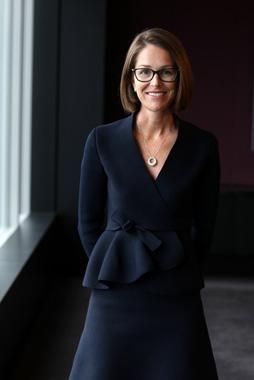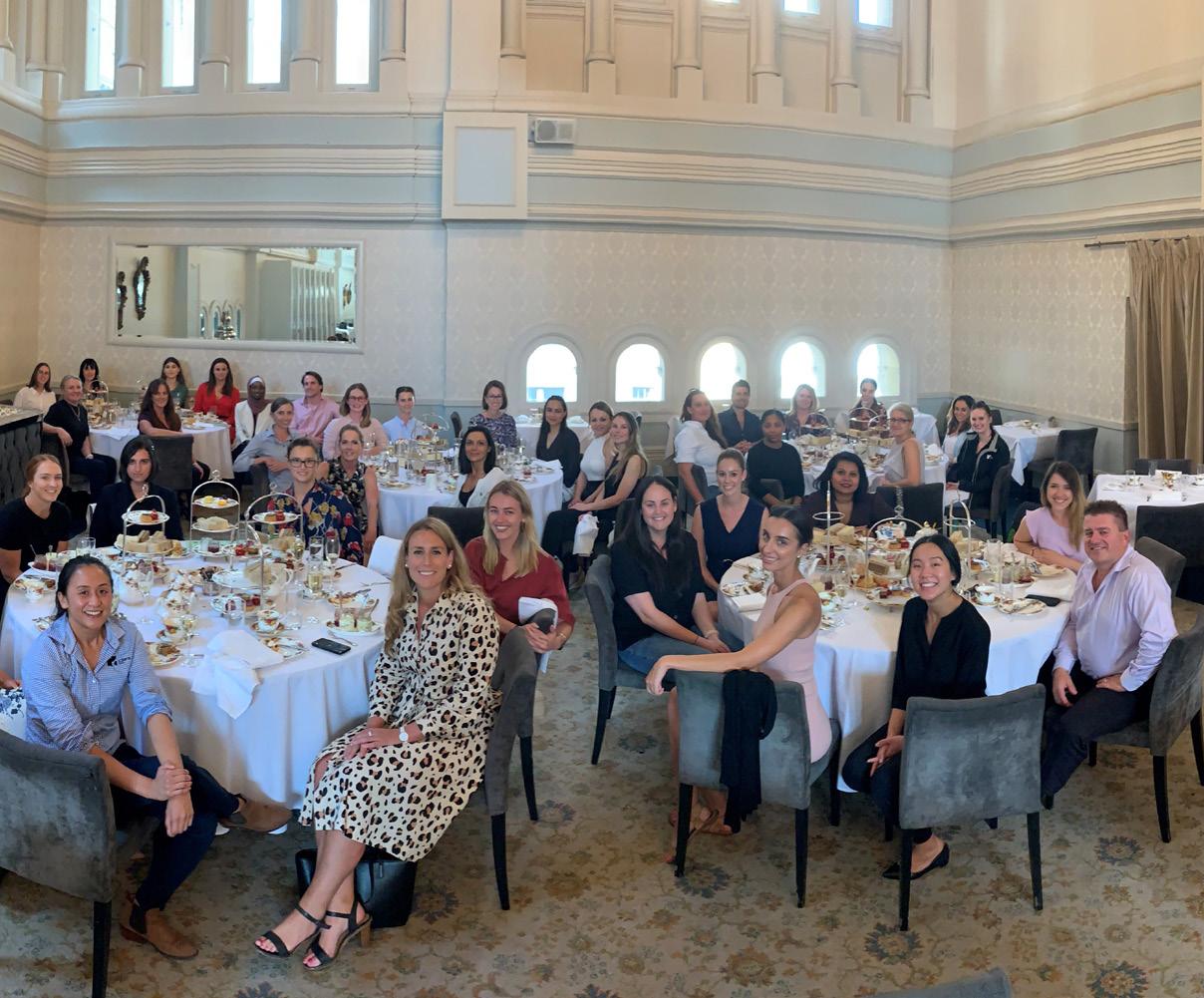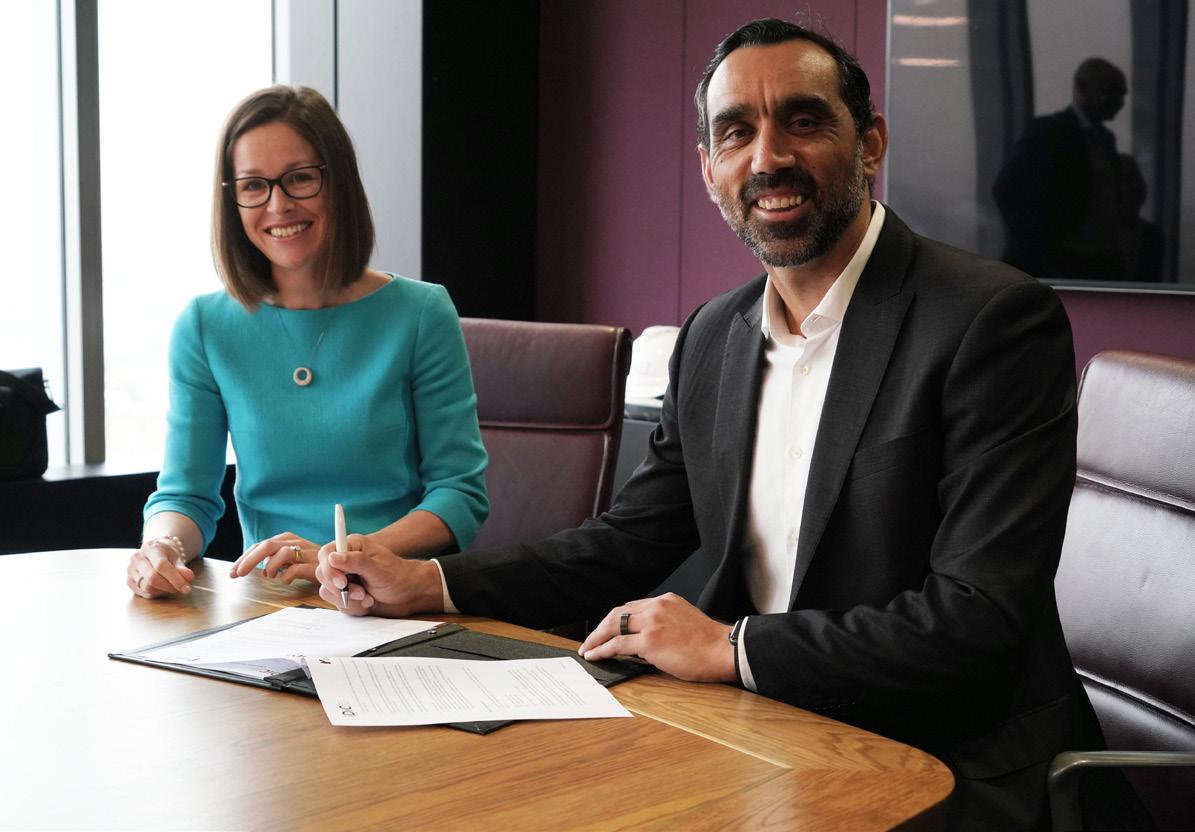
4 minute read
by Alison Mirams, Roberts Co
THE MORE THINGS CHANGE, THE MORE THEY STAY THE SAME
by Alison Mirams
CEO, Roberts Co & 2018 Laing O’Rourke Business Woman of the Year Award Winner (NSW)
On my first day working on a construction site I rang my now husband at lunchtime and said I’ve made a mistake. I’d been sent to a project in Chatswood, the site office was in a retail shop and at lunchtime the smell of hot chips drifted through the site office. I had a tiny desk and my boss told me I didn’t need a computer. Day two wasn’t an improvement. I was sent to head office for training where I was told - we will never say thank you so just suck it up. It was a massive culture shock. A few weeks in I was told by a site foreman “you won’t last.” But I did - for 16 years. It was a hard environment but there was something very addictive about it. In my first subcontractor meeting, the team spoke about window mullions and despite having a building degree, I had no idea what they were talking about. That night I looked up the definition of mullions in the paper dictionary, I couldn’t just google it in the meeting as Google wasn’t invented. We had a fax machine and each day’s correspondence was photocopied (as fax paper faded) and placed in a ‘red folder’ and it was circulated to the managers each day. Once read, you’d sign your name on the front and pass it on. Imagine the joy when email was rolled out and the red file and formal posted letters were disbanded. The site office was a sea of paper. Every project had an A1 plan printer. Supervisors carried plans in their back pockets. We had racks of A1 plans hanging next to the plan bench where all important decisions were made. There was no BIM or 3D design. Floppy disks were 5.25” and held a massive 360KB of data! We operated on MS DOS - I’m talking pre-Microsoft Windows. Each day the foremen would head out onsite at 7am. They’d only come back in for food and rest. Lunch was at the team table, but the conversation was not very ‘becoming.’ That was the 1990s. The foremen would carry a black book where they wrote everything down. The daily head count was completed walking the floor and counting men (and they were men). If the men moved floors during the count, they got counted twice. To say it was unsophisticated is an understatement. The supervisors and engineers would come back to the office at 4pm en masse to do their paperwork and have beers. Practical jokes were common. If you had an office,
The Roberts Co International Women’s Day 2021 High Tea

going on holidays was a dangerous proposition for what the team might do to your office whilst away. iPhones and iPads weren’t invented. If you needed to make a phone call you returned to the site office where everyone had a desk phone. Two-way radios and shouting were the main mode of communication on site. One of the cadet’s jobs onsite, apart from stacking the beer fridge, was to take photos of construction with THE site camera (this was a far better job than printing drawings all day). If we needed the photos urgently, we asked for the one hour development of the film at the chemist. The international currency of beer was alive and well onsite. It was common for variation work to be undertaken for a case of beer or two. I always kept a note of the beer trades that occurred onsite to ensure I didn’t pay money, if the agreed currency was beer. I wasn’t given a toilet onsite, I had to use a retail centre down the road. There was porn on the walls in the lunch rooms and on the inside of the tool boxes. As I’d walk past the workers would lift the tool box lid and you’d hear the giggles. Wolf whistles were common - it wasn’t a compliment. That’s how it was in the 1990s. Thinking about today, it feels like we’ve taken two steps forward and one step backward.
We’ve embraced technology, we are more sophisticated and our sites are safer (we don’t have riggers riding the hook anymore). iPads and iPhones have made communication easier (perhaps too easy with everyone cc’d), but crane bookings can still be found on whiteboards. We pour concrete the same way, formwork is the same, albeit with some systems, and we still hand lay bricks. Sadly, we have become too politically correct. We have lost the practical jokes, the fun and the side-splitting laughter from the 1990s. Sadly, we are only 18.1% female (2% of trades) and only 13% of managers are female. Presenteeism is high and ‘busy’ is worn as a badge of honour - the industry is obsessed with working six and seven days per week. Technology is advancing but it’s being built in silos, not industry-wide. Offsite prefabrication is the great hope to drag the industry into the 21st century. The industry has become more sophisticated but has not holistically changed. I wonder if we can radically change in the next 25 years or if we will still be the same in 2046?

Alison Mirams is a female trailblazer in the construction industry. Alison can be seen here signing an agreement with iDiC’s CEO, Adam Goodes. Key to the agreement is the commitment to build capability and capacity of iDiC’s Indigenous subcontractors as well as providing opportunities for them to work on Roberts Co projects and support corporate activities. To find out more visit idefcon.com.au









